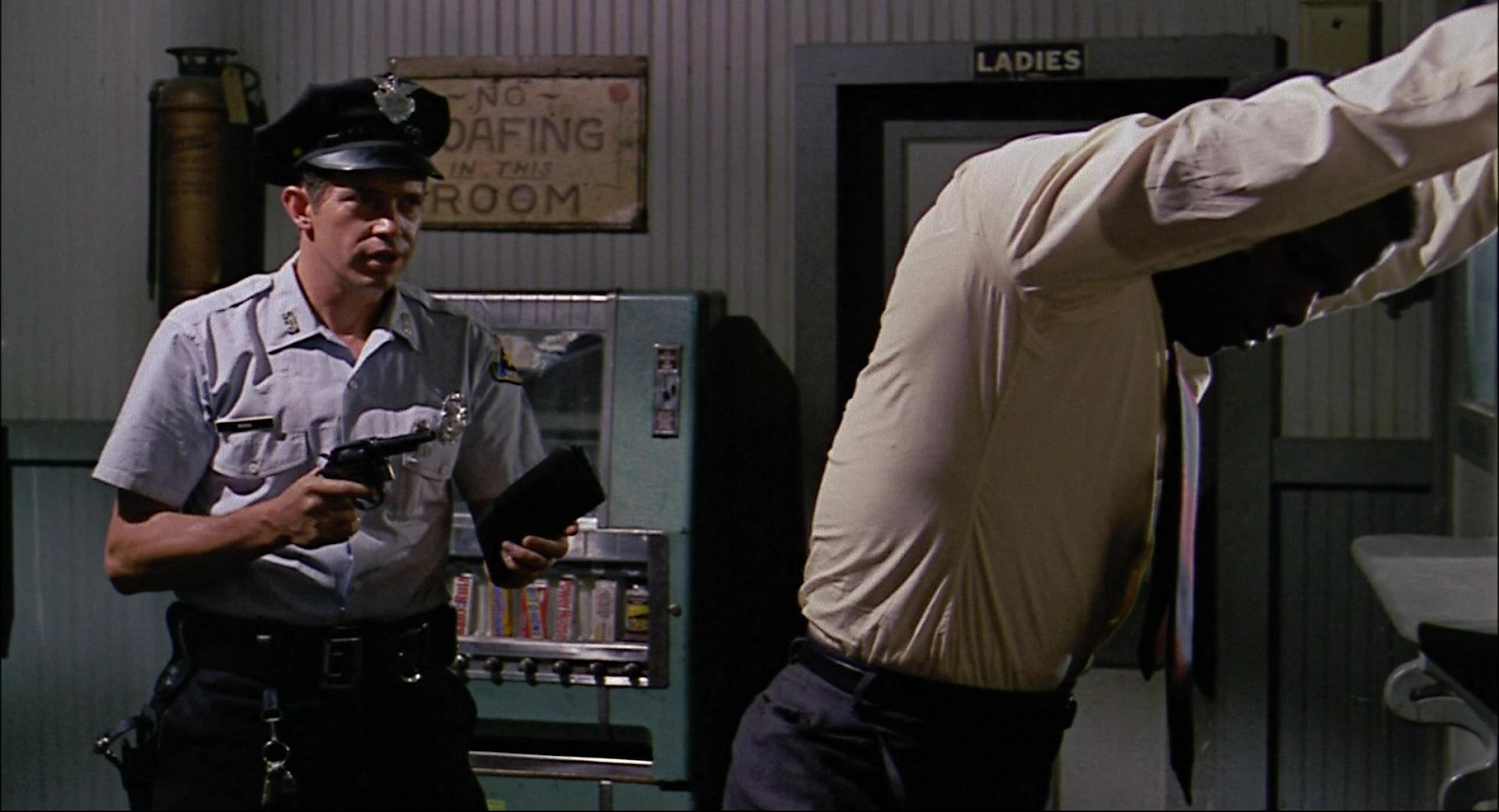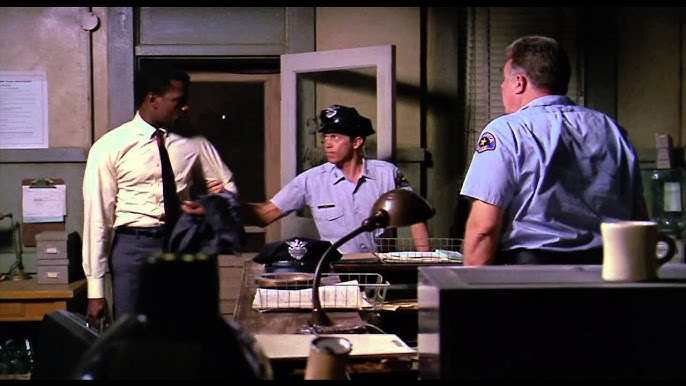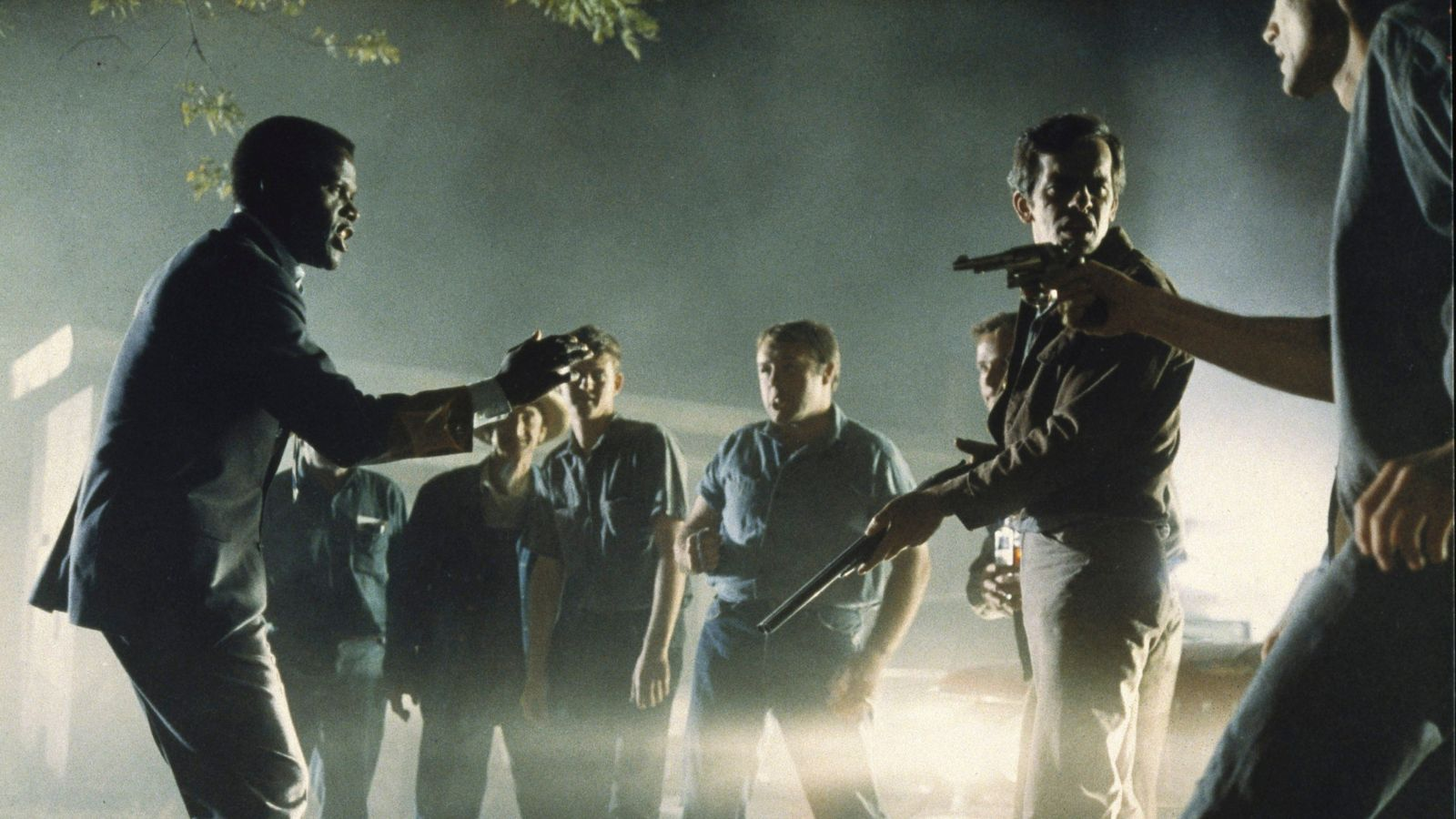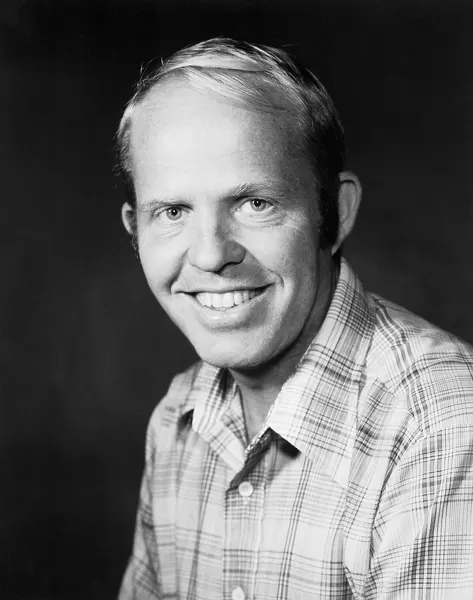Before long, the town's doctor and chief of police responded to the scene. After the Doctor Stewarts estimated the time of death to be within several hours of the discovery, Police Chief Bill Gillespie ordered Officer Wood to search for potential suspects involved with the case. The officer would search several potential locations before arriving at the train station where he would encounter Mr. Virgil Tibbs. Despite Virgil's calm demeanor and passive body language, Sam drew his gun, searched, and took Mr. Tibbs to the police station for questioning.
This scene is important because it highlights to implicit racism that lingered in the south after generations of slavery. Office Wood had no reason to suspect Mr. Tibbs for the murder of Colbert and even less reason to draw his sidearm given Tibbs' body language. Therefore, Sam's behavior can be attributed to bias derived from Virgil's status as a black man. It was not uncommon for southerners to blame African Americans for crimes during this era due to a misguided perceptions.
Moreover, Sam's dialog reinforces this narrative. Over the course of the interaction, the police officer repeatedly referred to Virgil Tibbs as "boy." In the present Merriam-Webster dictionary, the fifth definition of the aforementioned word was used to condescendingly address "male servants or enslaved men." Such shameless expression of racism was widespread throughout the south during these years in American history. As a Philadelphia native, Virgil would have been caught off by this experience if it was his first visit to the deep south.
After the interaction with Sam, Virgil was escorted to the police station to be questioned by the chief of police, Gillespie. Affected by Wood's bias and likely internal bias, the chief developed a similar position which was reinforced by the money found in Tibbs's wallet. Although it was not explicitly announced, Gillespie had deduced that the only possible explanation for Virgil's wealth was theft and potentially murder. Such a conclusion was likely based on Bill Gillespie's perception of the financial and social position of African Americans.
After proving his innocence, Virgil expectedly collected his belongings with the intention on returning the Philadelphia as soon as possible. Before he could leave, however, Chief Gillespie convinced Mr. Tibbs to join the investigation. Such a decision was likely regrettable, but Virgil's determination to uncover the murder and disseminate justice overpowered his apprehension.
Over the course of his time in Sparta, Virgil Tibbs would experience several instances of racism, both overt and implicit. As a well off black man in a poor community in the deep South, Virgil stood out whenever he went. This was exemplified by several encounters with a group of racists who drove a car with a confederate flag license plate. This detail is significant because it reverberates the living sentiment of the lost cause. To this day and certainly during the time period of the film, some southerners cling to the confederate cause and ideology.
On a separate note, the relationship between Chief Gillespie and Mr. Tibbs is central to the plot of the film. Despite Gillespie's initial prejudice, the two characters develop an amicable relationship by the end of the feature. The progression of the plot element serves as a microcosm for American society as a whole during the time of filming. Similar to Rod Steiner's character, many Americans began to dissociate from generations of racial prejudice and realize the humanity of black Americans.
This motif is especially prevalent at the end of the nursery scene when Virgil expressed his desire to undermine the rich and powerful Endicott. In response to this comment, Gillespie informed Mr. Tibbs that he was "just like the rest of us." At face value, this phrase signifies that Virgil and the town of Sparta were displeased by Endicott's cotton empire. From a different perspective, however, the chief's remark serves as a symbol of the subtle realization in American culture that black people were similar to white people in more ways than not.
In all, In the Heat of the Night was a fantastic film that highlighted the great changes that befell the American culture in the civil rights era. From interpersonal interactions to social structures, the movie perfectly encapsulated the struggles of all Americans, from colored peoples to women, during an era of unprecedented progress and change.









No comments:
Post a Comment